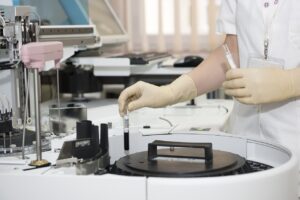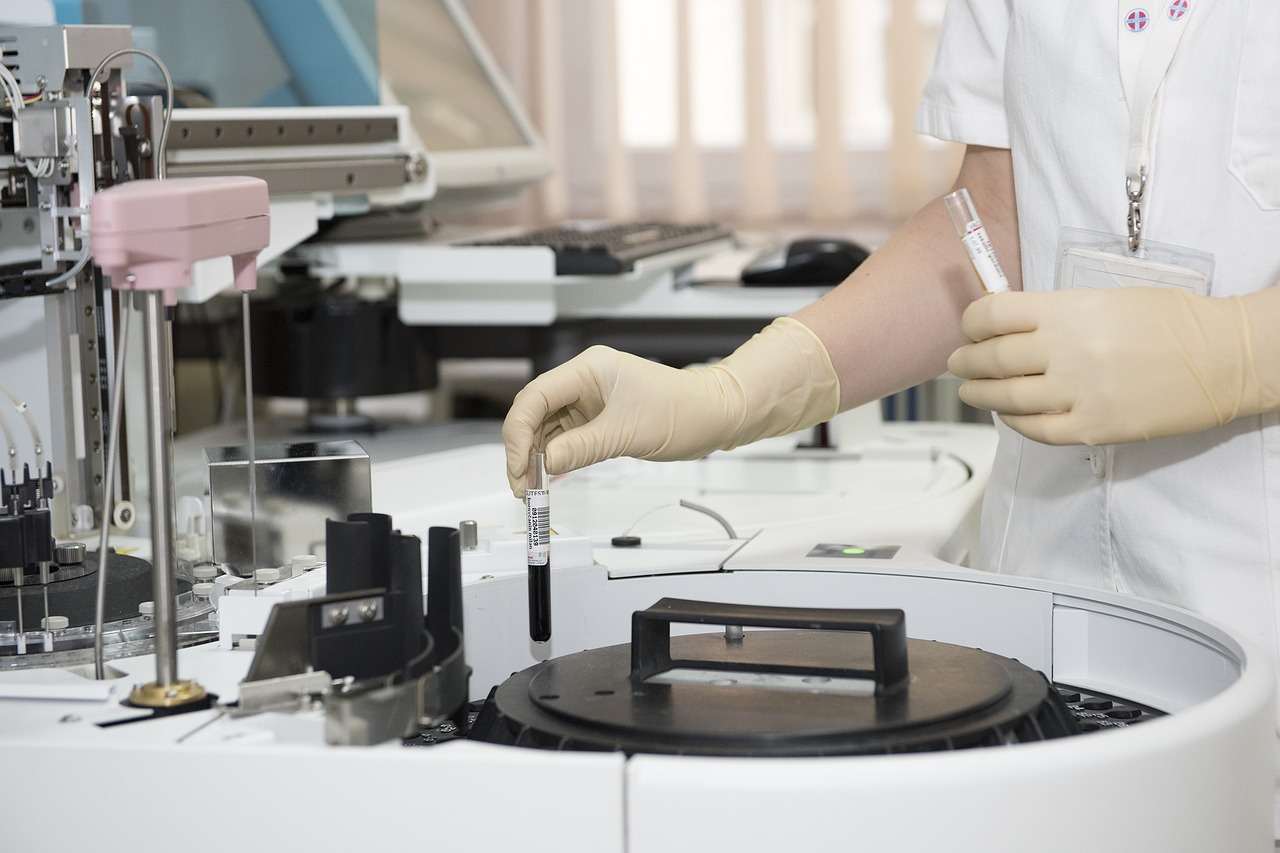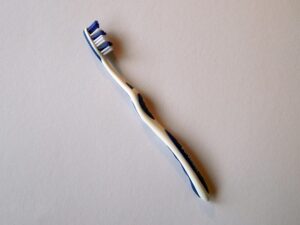
Urobilinogen is a substance that is measured in urine. It can be tested for as part of a urinalysis panel, or by itself. If levels are too high or too low, it may be a sign of disease in the liver and gallbladder.
How is Urobilinogen Made
Your red blood cells (RBC) contain a protein called hemoglobin which helps transport oxygen throughout the body. The “heme” represents the iron containing portion and the “globin” represents the protein portion. When RBCs are broken down in the body, the heme portion is broken down into biliverdin, which is then converted into unconjugated bilirubin, taken up by the liver and then converted into conjugated bilirubin, before it is then excreted into the bile. Next, the intestines convert it back into un-conjugated bilirubin and it is reabsorbed into the bloodstream where it is excreted again into the bile. Whatever isn’t reabsorbed will get reduced into urobilinogen and excreted in the urine. Some will also be excreted into the stool after it has been converted into stercobilinogen.
Urobilinogen In Urine
Specimen of Choice
- The typical sample for urobilinogen testing is urine. A random urine sample will be sufficient. However, since most urobilinogen testing is done while performing a urinalysis panel, it is possible to have as a clean catch if the sample has a culture attached to it.
Interfering Factors
- Direct Light: Since urobilinogen will break down when exposed to sunlight, care should be taken for the specimen to avoid prolonged periods in direct light. If proper care is not taken, this could potentially end with a false negative result.
- Time: Sometimes, certain analytes are higher or lower at different parts of the day, which can make a big difference for results. A 2023 study (Alperen Halil Ihtiyar, 2023) determined that bilirubin has diurnal variation and that it was higher in the morning as opposed to at night. Levels in test subjects decreased after 10:30 a.m. while reaching the lowest levels around 12:00 p.m. , accounting for a daily variation of 32.13%. This is clinically significant to urobilinogen results because bilirubin is its precursor. Overnight fasting causes increased bilirubin levels, so this may be one explanation for the morning increase. Another possible reason for the increase in the morning vs. night results is because of bilirubin’s photosensitivity. The more light that a patient is exposed to as the day progresses, the more bilirubin is potentially degraded. Due to the large variance of day and nighttime levels, the morning time would be the best time to submit a specimen for bilirubin or urobilinogen testing.
Typical Results
Normal Urine Urobilinogen
Normal ranges found in the urine are typically at 0.2-1.0 mg/dL.
Decreased Urine Urobilinogen
Lower urine urobilinogen levels below 0.2 mg/dL might be for several reasons like a bile duct obstruction or antibiotic therapy.
- Bile Duct Obstruction, also known as cholestasis, is where there is an obstruction in the bile pathways between the liver, gallbladder and small intestine. Gallstones and tumors are frequently to blame . Common symptoms are jaundice and clay colored/pale colored stools.
- If patients are undergoing antibiotic therapy, this can also cause a marked decrease in urobilinogen. This is due to the drug’s disruption of the gut bacteria which are responsible for un-conjugating bilirubin. With the bilirubin still in its conjugated form, the body is unable to convert into urobilinogen, thus results will be lower. According to a study of 10 different antibiotics by the Karolinska Institute (Saxerholt H, 1986), bacitracin, vancomycin, clindamycin, erythromycin, and ampicillin were found to reduce levels the most.
Increased Urine Urobilinogen
Higher levels of urobilinogen above 1.0 mg/dL may be a sign of hepatitis, cirrhosis or hemolytic anemia. These are all conditions resulting in increased urobilinogen due to increased levels of its precursor, bilirubin.
Conclusion
Urobilinogen is a useful test for identifying diseases involving the liver and gallbladder. The key factors of what will affect results the most is the amount of bilirubin being produced, whether it is conjugated or unconjugated and which part of the hepatobiliary system is malfunctioning. Just remember to keep the urine sample away from light, transport to the lab ASAP and submit your sample to the lab in the morning if possible.
References
Alperen Halil Ihtiyar, M. H. (2023, January 31). The Effect of Diurnal Variation on Laboratory Tests. Journal of Basical & Clinical Health Sciences, 387-395. doi:https://doi.org/10.30621/jbachs.1122518
Saxerholt H, C.-D. B. (1986, Oct 8). Influence of Antibiotics on the Faecal Excretion of Bile Pigments in Healthy Subjects. doi:https://doi.org/10.3109/00365528608996410











